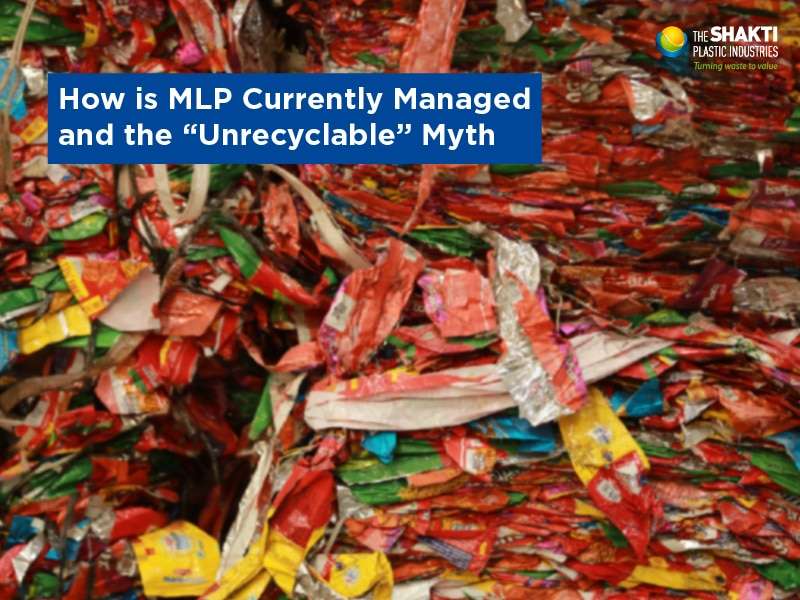Single-use products have become a ubiquitous part of our daily lives, from packaging materials to disposable cups and utensils. One such product is multi-layered plastic (MLP) packaging, which is used extensively in the food and beverage industry. MLPs are designed to protect food from light, air, and moisture, and they often feature a combination of different types of plastic, making them challenging to recycle.
Despite the challenges, MLP recycling is critical to reduce plastic waste, conserve resources, and protect the environment. This article will explore why MLP recycling is essential, the benefits it offers, and the challenges it poses.
What is Multi-layered Plastic (MLP) Packaging?
Multi-layered plastic (MLP) packaging is a type of plastic that is composed of multiple layers of different types of plastic. These layers are fused together to create a material that is resistant to moisture, light, and air, making it ideal for food and beverage packaging. MLP packaging is commonly used for snacks, candies, and beverages, among other things.
The Importance of MLP Recycling
Recycling MLPs is essential because they are one of the most challenging types of plastic to recycle. Due to their layered structure, MLPs require special processing to separate the different plastic types and recycle them efficiently. Without proper recycling, MLPs end up in landfills, where they can take hundreds of years to decompose. Recycling MLPs is essential to reduce the amount of plastic waste that ends up in landfills and to conserve natural resources.
The Environmental Impacts of MLP Packaging
MLP packaging has several environmental impacts. Firstly, it contributes to plastic pollution in landfills and oceans. MLPs are not biodegradable, which means they do not decompose naturally. This can cause harm to wildlife and their habitats, as animals can ingest the plastic, mistaking it for food. Secondly, the production of MLP packaging requires significant amounts of fossil fuels, contributing to greenhouse gas emissions and climate change.
The Benefits of MLP Recycling
MLP recycling offers several benefits. Firstly, it reduces the amount of plastic waste that ends up in landfills, where it can take hundreds of years to decompose. Secondly, it conserves natural resources, such as petroleum, that are used in the production of plastic. Recycling MLPs can help reduce the demand for these resources and reduce the environmental impacts of plastic production. Lastly, recycling MLPs can help create jobs in the recycling industry and promote a circular economy.
The Challenges of MLP Recycling
Recycling MLPs poses several challenges. Firstly, the different types of plastic used in MLP packaging make it challenging to recycle efficiently. Secondly, MLP packaging often contains food residue, which can contaminate the recycling stream and reduce the quality of the recycled plastic. Finally, there is a lack of infrastructure and technology to recycle MLPs on a large scale.
The Future of MLP Recycling
The future of MLP recycling looks promising, with advances in technology and infrastructure that make it possible to recycle MLPs efficiently. Several companies are investing in the development of new recycling technologies that can separate the different types of plastic in MLPs and produce high-quality recycled plastic. Additionally, governments are implementing regulations and policies that promote the recycling of MLPs and encourage companies to use more recyclable materials.
Conclusion
In conclusion, MLP recycling is essential to reduce plastic waste, conserve natural resources, and protect the environment. While recycling MLPs poses several challenges, advances in technology and infrastructure, along with government regulations, are making it possible to recycle MLPs efficiently. As consumers, we can also play a role in promoting MLP recycling by choosing products with recyclable packaging and properly disposing of MLPs in recycling bins. By working together, we can create a more sustainable future and reduce our impact on the environment.
FAQs
What is the difference between MLPs and other types of plastic?
MLPs are composed of multiple layers of different types of plastic, making them challenging to recycle. Other types of plastic, such as PET or HDPE, are made of a single type of plastic and are easier to recycle.
How can I recycle MLPs?
Check with your local recycling program to see if they accept MLPs. If they do not, contact the manufacturer of the MLP packaging to see if they offer a recycling program.
Can MLPs be reused instead of recycled?
MLPs are not designed for reuse, and reusing them can pose health risks, as they may contain harmful chemicals or bacteria.
What are some alternatives to MLP packaging?
Some alternatives to MLP packaging include single-layer plastic packaging, paper-based packaging, or reusable containers.
What can I do to reduce my use of MLP packaging?
Choose products with recyclable packaging, bring your reusable bags and containers when shopping, and avoid purchasing products with excessive packaging.

